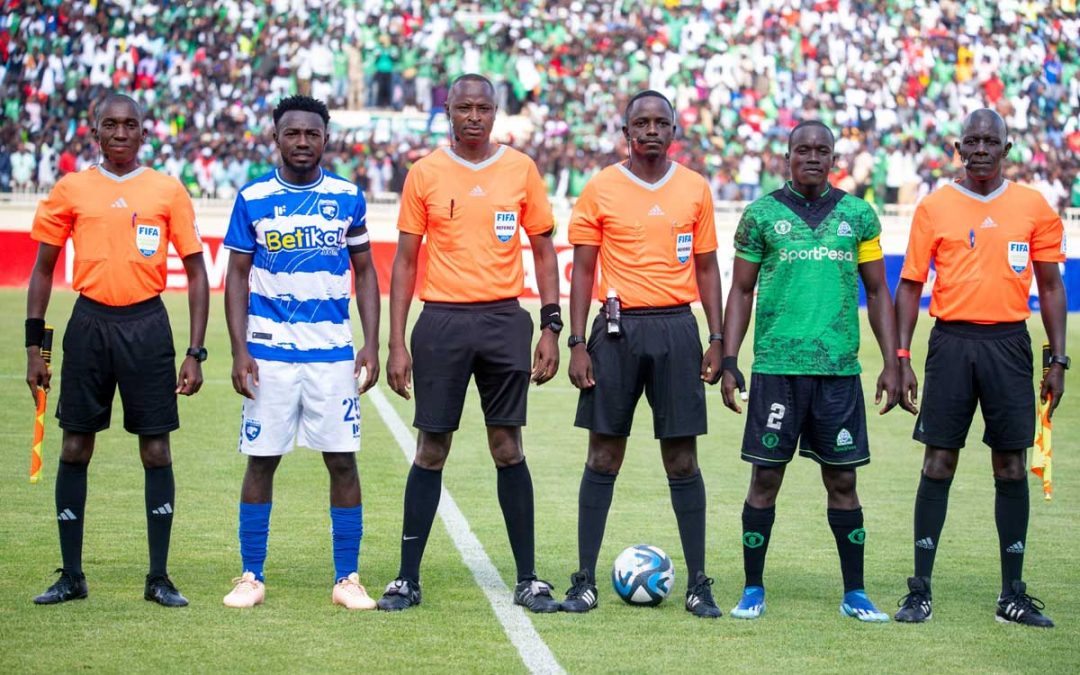In recent times, Gor Mahia and AFC Leopards, two of Kenya’s most celebrated football clubs, have found themselves at the centre of attention. However, this spotlight isn’t due to the usual concerns of hooliganism or fan-related violence; instead, it revolves around an unusual and somewhat embarrassing predicament—the absence of an appropriate venue for their much-anticipated derby match.
AFC Leopards encountered significant challenges in organising the first leg of the match, which they postponed not once, but twice, before securing a venue—the Nyayo National Stadium, a government-owned facility known for hosting high-profile events. In parallel, Gor Mahia faced their complications, as they were barred from using the Moi International Sports Centre, Kasarani, for the derby’s second leg due to extensive renovations currently underway at the complex.
The derby, famously dubbed The Mashemeji Derby (translated as “The In-Laws Derby”), thrives on the electric atmosphere created by its massive fan base. This passionate crowd demands a venue that can accommodate a larger number of spectators, ideally exceeding 30,000. Recent developments revealed that the 30,000-capacity Nyayo National Stadium struggled to cope with a surge in attendance, prompting the Football Kenya Federation (FKF) to commit to avoiding small-scale venues for such prominent matches in the future.

As events unfold, it becomes increasingly clear that the derby can only flourish in stadiums capable of holding more than 30,000 spectators. Currently, only Kasarani or the soon-to-be-completed Atlanta Hela Stadium possess the capacity to meet these requirements.
Looking ahead, East Africa is bracing itself for major sporting events, including CHAN 2025 and AFCON 2027, which will occur across Kenya, Tanzania, and Uganda. Each of these countries is actively preparing for the tournaments, with plans for at least one new stadium construction already in progress. However, as preparations rush forward, the idea of cross-border migration for football fans raises an intriguing question: Can regional supporters begin to train themselves to travel across borders for these thrilling matches?
This situation opens up a fascinating dialogue about the viability of hosting such high-energy derbies in different countries within the East African region, allowing for games to be played in stadiums that are more readily available. Venues such as the Benjamin Mkapa Stadium in Dar es Salaam and the Nelson Mandela Stadium stand out as compelling candidates to host matchups between these fierce rivals.

Moreover, there is a growing aspiration among East African nations for a unified trade policy. Integrating significant sporting events across borders could not only enhance the football experience but also serve to promote cultural exchange and strengthen the bonds within the East African community.
Imagine the scene: fans of Simba SC rallying behind AFC Leopards in support, while Young African SC (Yanga) supporters flock to lend their voices to K’Ogalo at the Benjamin Mkapa Stadium. Conversely, picture the same camaraderie in reverse when Yanga faces Simba at Kasarani, with their respective fan bases swaying together in unison. This is the essence of football—it transcends boundaries and fosters unity and camaraderie among diverse communities worldwide.
By adopting innovative approaches and fostering a shared passion for the sport, we can elevate our derbies, transforming them into spectacles that would be cherished on a global scale. Similar to the beauty of football itself, which is renowned for bringing people together, unity among fans breeds an atmosphere of healthy and spirited engagement.
The opinions expressed herein are solely those of the author and do not necessarily represent the views of Gor News.

